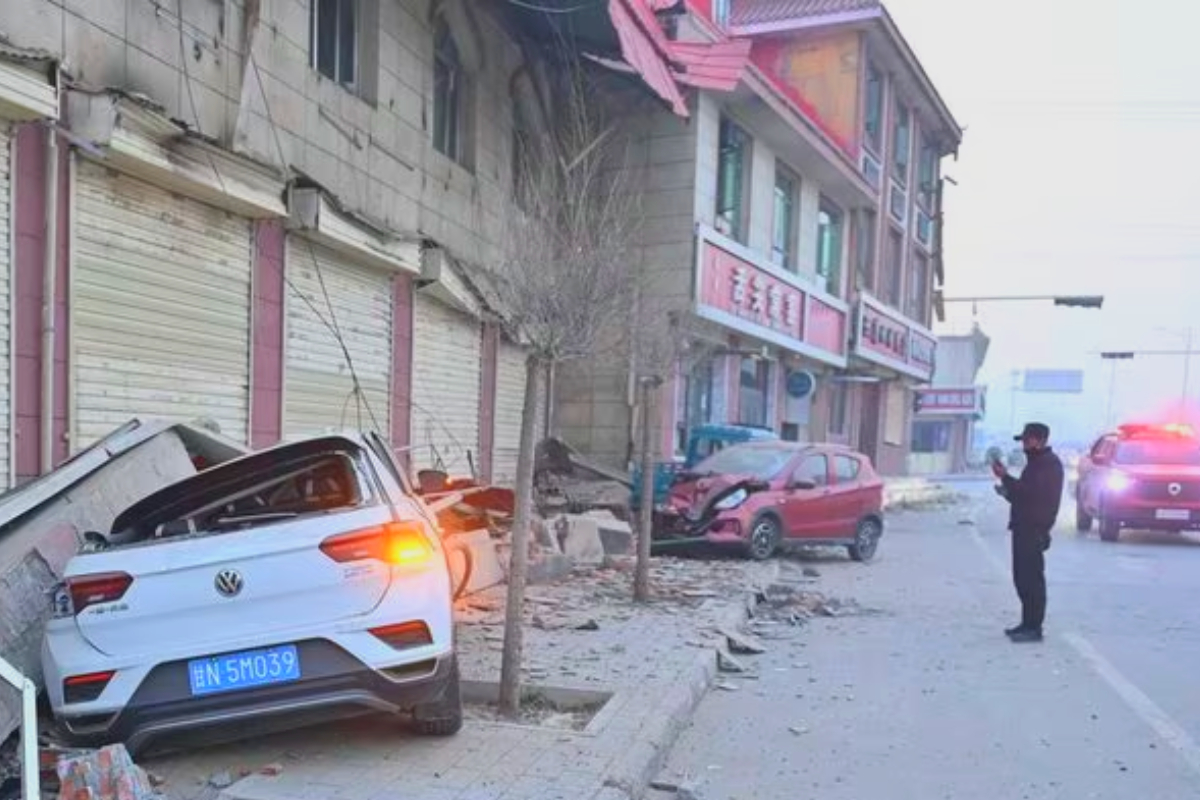BEIJING: A magnitude-6.2 earthquake jolted a remote and mountainous region on the northern edge of the Qinghai-Tibetan plateau just before midnight on Monday, killing at least 118 people and injuring hundreds, according to Chinese state media.
Authorities have swiftly mobilised an array of emergency responses after the quake wrecked roads and infrastructure, triggered landslides, and half buried a village in silt.
Rescue work has proved challenging in subzero temperatures, with most of China grappling with below-freezing conditions after a powerful cold wave swept across the country.
Earthquakes are common in western provinces such as Gansu, lying on the eastern boundary of the tectonically active Qinghai-Tibetan plateau. China’s deadliest quake in recent decades was in 2008 when a magnitude-8.0 temblor struck Sichuan, killing nearly 70,000 people.
At 11:59 p.m. local time (1559 GMT) on Monday, the latest quake struck Jishishan county in Gansu at a depth of 10 km (6.2 miles), according to China Earthquake Networks Center (CENC). The epicentre was 5 km from the border between Gansu and a neighbouring province, Qinghai, where strong tremors were also felt.
In Gansu, 105 were killed as of 7:50 a.m. Tuesday (2350 GMT Monday), and of 397 injured as of 9:30 a.m., 16 were in critical condition, provincial authorities told a news conference. The death tally in Qinghai rose to at least 13 with 182 injured. Officially, 20 people remained missing.
About 2,200 personnel from the Gansu provincial fire department and 900 from the forest brigade, as well as 260 professional emergency rescue workers, were dispatched to the disaster zone, the Xinhua news agency reported, adding that hundreds from the military and police were also deployed.
The province, which has allocated 20 million yuan ($2.8 million) to the local government for emergency response work, also sent supplies that included 2,600 cotton tents, 10,400 folding beds, 10,400 quilts, 10,400 cotton mattresses, and 1,000 sets of stoves.
As the disaster area is in a high-altitude region where the weather is cold, rescue efforts are working to prevent secondary disasters caused by factors beyond the quake. The temperature in Linxia, Gansu, near where the quake occurred, was about minus 14 degrees Celsius (6.8°F) on Tuesday morning.
Although the 72 hours after a quake are the most likely time to rescue survivors, that will be shortened by the harsh weather, with trapped victims facing higher risk, it said. Some water, electricity, transportation, communications and other infrastructure have been damaged.
Power to the quake-hit area was being gradually restored, after the state grid sent 18 emergency repair teams, CCTV said. At noon local time, about 88% of the power supply had been restored in Jishishan.
Dozens of highways and rural roads were damaged amid multiple landslides, although no casualties were reported. A major hydropower dam 50km from the epicentre was unaffected by the quake. CCTV reported that the dam, on the upper Yellow River, was operating normally.
In a village in Qinghai, the quake triggered a mudslide that left many houses half-covered in brown silt. Rescuers have deployed drones, excavators and bulldozers to find and rescue survivors, local media reported. Tremors were felt as far as 1,000 km away in central Henan province, where local media outlets shared videos of furniture swaying in people’s homes.
Preliminary analysis shows that the quake was a thrust-type rupture, one of three above magnitude 6 to have struck within 200km of the epicentre since 1900, CCTV said. The state media reported at least 32 aftershocks in the hour after the quake hit.
Gansu officials told reporters that the last strong quake of at least magnitude 5.0 to hit within 100 km of the epicentre was in 2019. A total of nine aftershocks at magnitude 3.0 and above were recorded by Tuesday morning, two of which were at least 4.0 in magnitude.
About 3,000 km from Jishishan in Xinjiang region, another earthquake struck at 9:46 a.m. local time (0146 GMT) Tuesday, with a magnitude of about 5.5 and at a depth of 10km.


